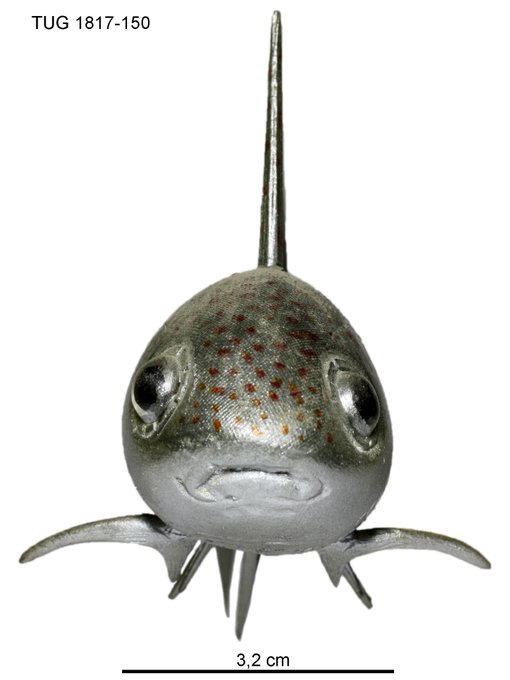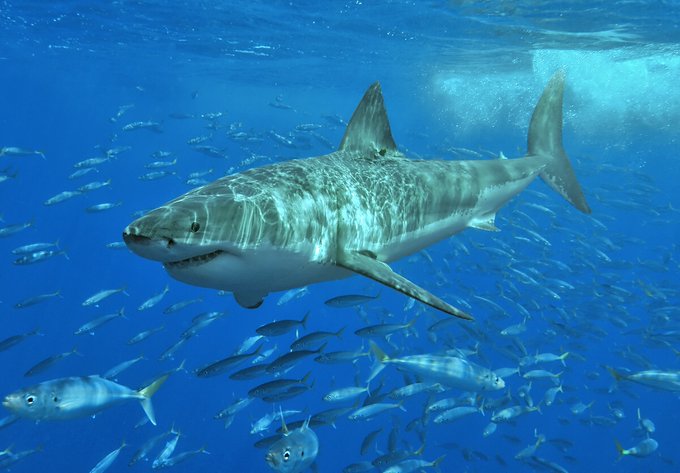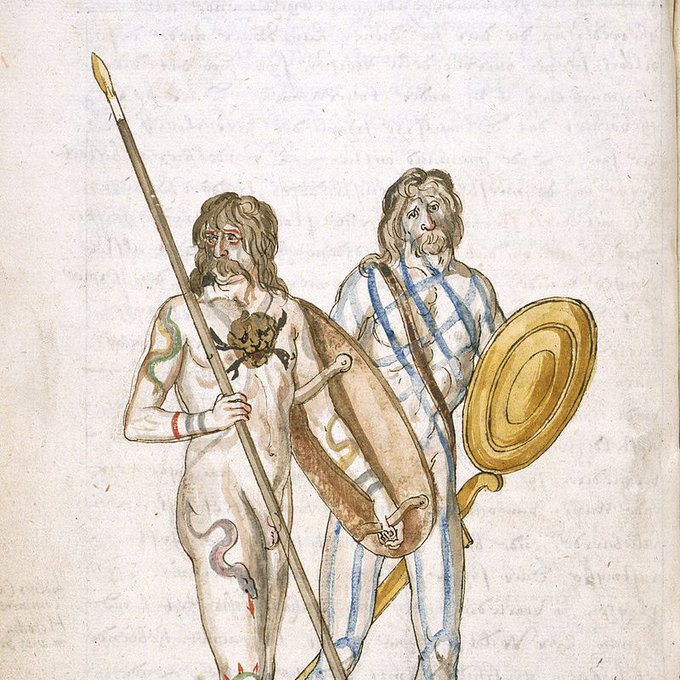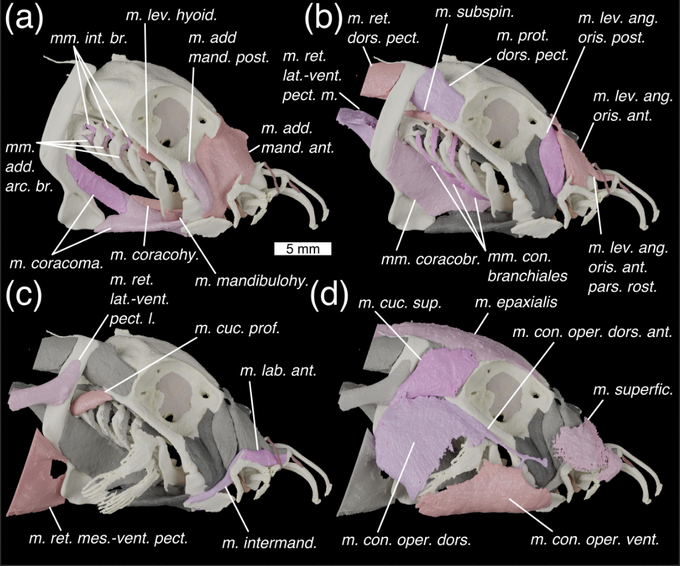Iniopera is like holocephalans in some ways, e.g. with a jaw fused to the skull Using living chondrichthyans as a comparison we reconstructed the musculature in Iniopera: like living holos it seems to have had a large preorbital origin of the mandibular adductor.6/13
Check out our 🚨New #OpenAccess paper🚨 in @PNASNews in which we argue that the weird cranial anatomy of the Carboniferous chimaera Iniopera are adaptations to suction feeding. Thread to follow at some point today! @Le_Museum @Palaeo_Bham
https://t.co/PF7k4S5WFf
Petition to go back to calling hagfish basal plates "The dominant monster of the hag"
For #FossilFriday a pair of wonderfully perturbed-looking acanthodians.
Living sharks + friends are cartilaginous fishes. This group split from bony fishes (all other less cool jawed fishes, including you) over 420 million years ago. The very earliest shark-relatives with complete fossils are various spiny things collectively called ‘acanthodians’.
🚨 NEW PAPER 🚨
What links a 415 Myo fossil, batarang-y scales, an upside down catfish (right way up), and these dashing ancient Britons?
Delve into the early evolution of sharks in our @ThePalAss Papers in Palaeo paper! #openaccess
https://t.co/srJ2Um93tx
🧵 below
(1/26)
With the conjunction of #InternationalGhostSharkDay and #FossilFriday: Echinochimaera, a stem-holocephalan from the late-Mississippian Bear Gulch limestone.
Very well-endowed in the spine department, Echinochimaera is just a slice of the group's huge Carboniferous diversity in.
More fish from the old PhD lab group: @MCastiello88 et al. say 'ello to Ellopetalichthys, a middle Devonian petalichthyid placoderm from the Canadian Arctic.
https://t.co/maGqwOZXnB
Our new preprint (NOT YET PEER-REVIEWED) up on bioRxiv. We digitally dissect Callorhinchus + Scyliorhinus, and discuss chondrichthyan cranial muscle evolution. Feat. lots of pretty pictures of skinless fish heads. All and any feedback very welcome.
https://t.co/Ny8Zr1drNE
The body of today's holocephalans (chimaeras+) are mostly naked, and those few scales they do have are small denticles like those of sharks. Some of their early relatives however, like this Deltoptychius from the Carboniferous, had pretty substantial head-armour #FossilFriday





















